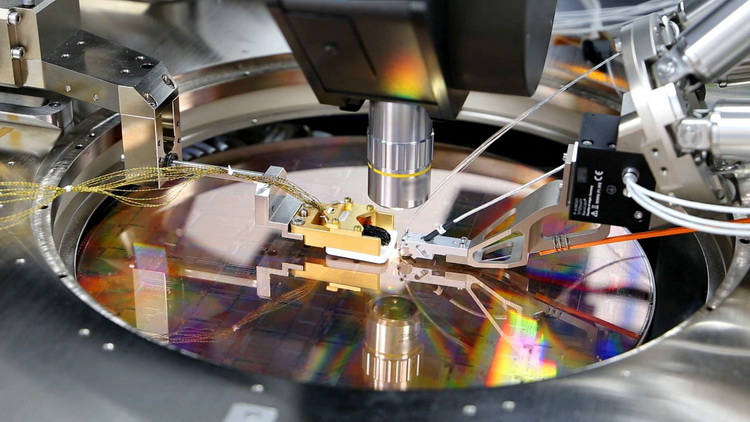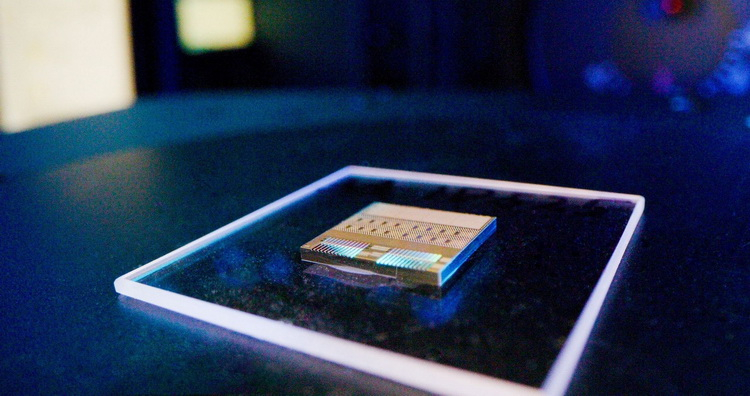Computers that use light instead of electric current to transmit data, which were considered just another research project a few years ago, are now receiving more and more attention. Startups solving engineering problems related to the use of photons (elementary particles of light) to transfer information between semiconductor chips receive hundreds of millions of dollars of investment, writes Reuters .

Image Source: Ayar Labs / Reuters
One example of such startups is Ayar Labs, a company working in the field of so-called silicon photonics. It recently announced that it has raised $130 million in funding for its developments. One of its investors is NVIDIA.
The processing power of transistor-based silicon chips has increased exponentially over the past decades. But since the dimensions of the transistors themselves have reached a width of several atoms, their further reduction is a very difficult technological task. Another problem with transistors is that they can pass signals, reducing the efficiency of their transfer. The semiconductor industry is moving towards a situation where Moore’s Law of doubling transistor density every two years will no longer work. This is pushing the industry to look for new solutions to meet the ever-increasing demand for more complex computing. Especially against the background of the rapidly developing field of artificial intelligence.

Last year, the silicon photonics market attracted investments totaling over $750 million, more than twice as much as in 2020, according to analyst firm PitchBook. And in 2016, this area was estimated at only $18 million.
“Artificial intelligence technologies are growing by leaps and bounds and are actively used in the same data centers. The movement of digital data and the issue of energy efficiency in the transfer of this data are very serious problems that need to be addressed here ,” said Charles Wuischpard, head of Ayar Labs, in an interview with Reuters.
The root of the problem is that machine learning algorithms require hundreds or even thousands of semiconductor chips to perform computational tasks. However, the speed of data transfer between these chips or entire systems using traditional electrical methods is very limited.
Light has been used for several decades to transmit signals with information using fiber optic cables. However, bringing the technology to the level of microchip production has long been a very difficult task. It was complicated by the need to reduce the size of devices that are used as light sources to the level of transistors.
According to emerging technology market analyst Brendan Burke of PitchBook, silicon photonics has the potential to become conventional equipment in data centers by 2025. And the market for silicon photonics by this moment can grow to $3 billion, that is, to the level of the market for graphics technologies using AI, as it was in 2020.

Startups use silicon photonics technologies not only as an effective means of transferring information between microcircuits as part of one or more computing systems. The development of quantum computers, new supercomputers, and microchips for autonomous driving systems are also attracting huge amounts of investment.
PsiQuantum, which is developing the first applied quantum computer, has raised $655 billion. Lightmatter, which is developing photonic processors to accelerate AI algorithms in data centers, has raised $113 million and promises to release the first ready-to-use products this year. Luminous Computing, a silicon photonics AI supercomputer backed by Bill Gates, has raised a total of $115 million in funding.
Interest in silicon photonics is shown not only by young technology companies, but also by quite seasoned representatives of the semiconductor industry. For example, Amir Faintuch, Head of Computing and Networking Development at GlobalFoundries, said that collaboration with PsiQuantum, Ayar Labs and Lightmatter allowed them to develop and build a platform for manufacturing silicon photonics products that its customers can use. The platform was launched in March this year.

The founder of the Playground Global venture fund, the investor of Ayar Labs and PsiQuantum, Peter Barrett, in a conversation with Reuters, noted that he believes in the long-term perspective of silicon photonics, as well as in its ability to significantly shorten computer computing. But there is still a lot of work ahead, he said.
“The guys from Ayar Labs have reached a very important milestone. They solved the problem of slow interconnect in high performance computing systems. However, the full transition to digital photonic computing in non-quantum systems will take some time ,” commented Barrett.
If you notice an error, select it with the mouse and press CTRL + ENTER.




